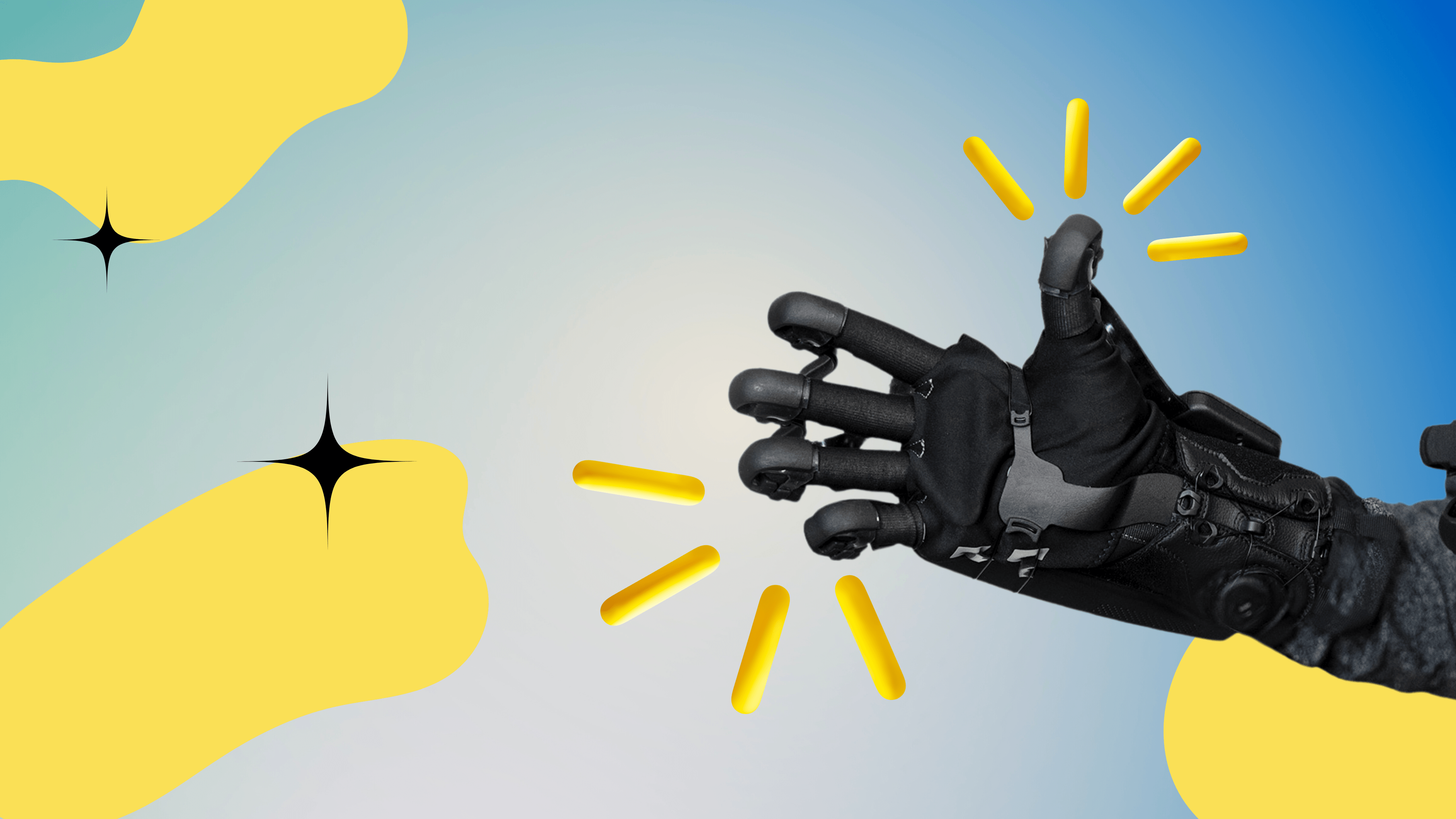- Let’s talk sense – most of us probably belong to one of two categories: those who prefer visual stimuli and those who prefer auditory ones. In fact, these are our two primary senses.
- Because of that, the vast majority of technology around us use mainly those two. No wonder hardware producers try to keep the pace. Haptic technology currently allows us to stay in touch with the digital experiences.
- It also touches a nerve with those dreaming about virtual reality perfectly replicating the real world.

- 1. Even your iPhone uses it
- 2. Behold! The glove!
- 3. More than VR goggles
- 4. Touch the future – it’s nearly here
Even your iPhone uses it
The term haptic comes from the Greek word haptikós which means the same as relating to the touch. But let’s think for a moment, how much information can be conveyed through touch. When you’re holding your phone, in a strictly physical sense, you get so many details about its state: its temperature, shape, texture, mass, or even its velocity, if it got thrown at you.
Haptic technology is all around us, hiding in its somewhat primitive state. The sidewalk bumps near the intersection are meant to warn the visually impaired about the nearest crossing. It’s haptic, and it’s a technology, is it not?
A clickable touchpad in your laptop is another, even if there are no physical buttons in sight. Or when you put your phone in silent mode and the only thing informing you about upcoming notifications are small vibrations. You guessed it, it’s haptics too.

Behold! The glove!
Imagine the times when phones had to be distinguished from each other by the sole metric of whether or not they had a touchable screen. Taps, swipes, or even short vibrations during writing are the simplest examples of communicating through haptic technologies.
Most of these innovations came from video games. In the 90s, developers tried to utilize any form of haptic technology in their hardware. Nintendo, with its Rumble Pak introduced vibrations to Nintendo 64, trying to make people forget about their failed experiment from the previous decade called Power Glove. Yes, it looked cool, and that’s about it.
Today, it’s more than expected to have vibrations in your controller pad when playing on a console. The same goes for analog triggers, which also make use of haptics.
The steering wheel resisting your turns is the result of force feedback, which had its beginnings on arcade, but now is a staple of any realistic driving simulator.
Are you looking for information about projects implemented with the use
of VR technology? Check out our extensive portfolio.
More than VR goggles
Haptic technology is one of the missing elements of full realism in simulating reality. Haptics go with virtual reality as well as a hand that fits the glove, therefore it’s only logical that we see more and more VR gloves accompanying VR goggles. There’s Haptx with their patented gloves which got their fair share of media attention, but there are also companies like Senseglove, VR gluv, and Manus with their quantum metagloves.
Similarly to virtual reality goggles, said gloves are already used in a variety of industries helping in the process of training surgeons or pilots, to give the fullest experience of the real world possible.
But why limit yourself to gloves, ultimately your entire body is covered with touch receptors. Full-body suits such as Tactsuit by bHaptics or Teslasuit are already on the market, ready to simulate all kinds of hits throughout your entire body.

Touch the future – it’s nearly here
You’re probably asking yourself – are haptics going to be utilized in the metaverse? All things considered, it seems like a logical conclusion. But when? That depends, but certainly, when haptic gear will be economically available for middle-class users, we’ll see more and more ways of using it in the metaverse.
Despite controversies surrounding the metaverse, which could’ve been made much worse if it were to involve haptics, it sure looks like a natural step towards full immersion in virtual reality. When gloves are on, VR and haptics truly go hand in hand.
Read more
The Best Cybersecurity Courses in the US
As we navigate the complex and ever-evolving landscape of the internet, the demand for skilled cybersecurity professionals continues to surge. From protecting sensitive information to thwarting cyberattacks, the importance of a well-rounded education in cybersecurity...
New, old history – immersive learning communicates history with the use of VR, AR, and MR technology
Traveling through time? Available right now! It's at your fingertips thanks to VR technology! Teaching history is entering a new era! Get to know the Renaissance and Baroque from the side that history textbooks don't offer by helping prepare the feast and the...
Industrial Revolution 4.0 – VR is changing the rules of the modern business game
Mechanization, electrification, digitization, and currently the phase of system integration and networking. Modern industry must constantly develop and rely on neoteric technologies, including VR. Not only VR goggles! Smart glass is a new tool to support the...

